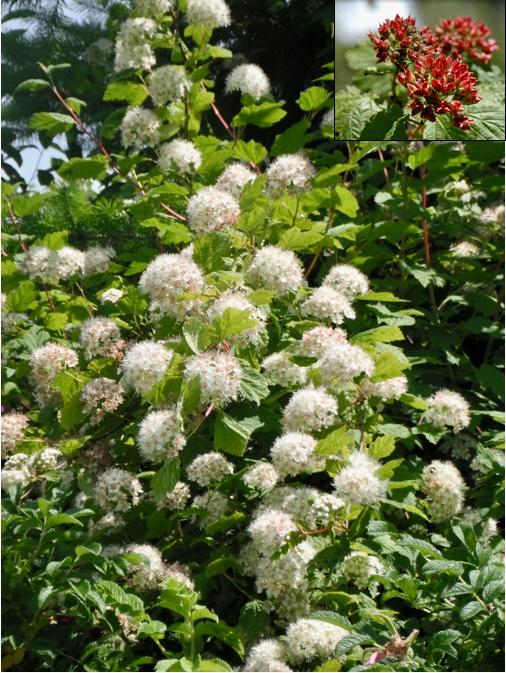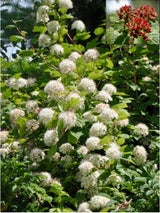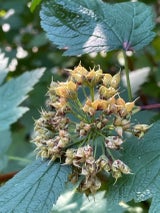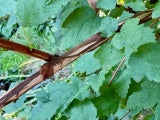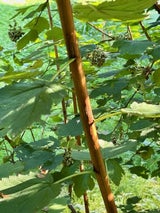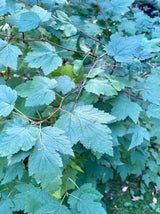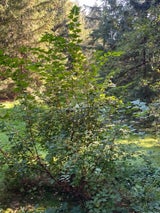- In the Garden
- >
- Gardens
- >
- Gardens A-D
- >
- BC Habitat Garden
- >
- Physocarpus capitatas
Physocarpus capitatas
Common name: Pacific Ninebark
Physocarpus capitatas is a tall, arching, deciduous shrub with attractive buds, white flower clusters, and reddish fruit. It is called Ninebark because it is believed to have nine layers or strips of bark to peel off. Native to western North America, this shrub usually occurs in wetlands. With its maple-like leaves and shape, Pacific Ninebark shelters wildlife as well as being a food source for native bees, butterflies, moths, birds and even mountain goats.
Pacific Ninebark has something 90% of land birds in North America can’t live without. Caterpillars. That is what they feed their young. Caterpillars are highly nutritious. Soft and easy to push down newly hatched throats too. In a 6-week period, chickadee babies in the nest will go through six to nine thousand caterpillars.
Although butterflies and moths feed on a variety of native flowers, most are fairly specific when it comes to the native host plant on which their eggs will hatch and caterpillars feed on. These host plants have always been a small percentage of native plants, but more so now with a decrease in habitat. Here is a list of the butterflies and moths native to our area along with the nectar and host plants they use:
The birds are hoping you might plant a host plant. And Dr. Doug Tallamy, the entomologist who coined the phrase ‘keystone plants, is hoping too. Without these host plants, our ecosystem would collapse like a Roman arch missing its ‘key’ stone - check out this video.
The pictures were taken in the BC Habitat Garden in October, 2022. The flower picture is from nativeplantspnw.com.
Text and photos except as noted are by Hughie Jones.
